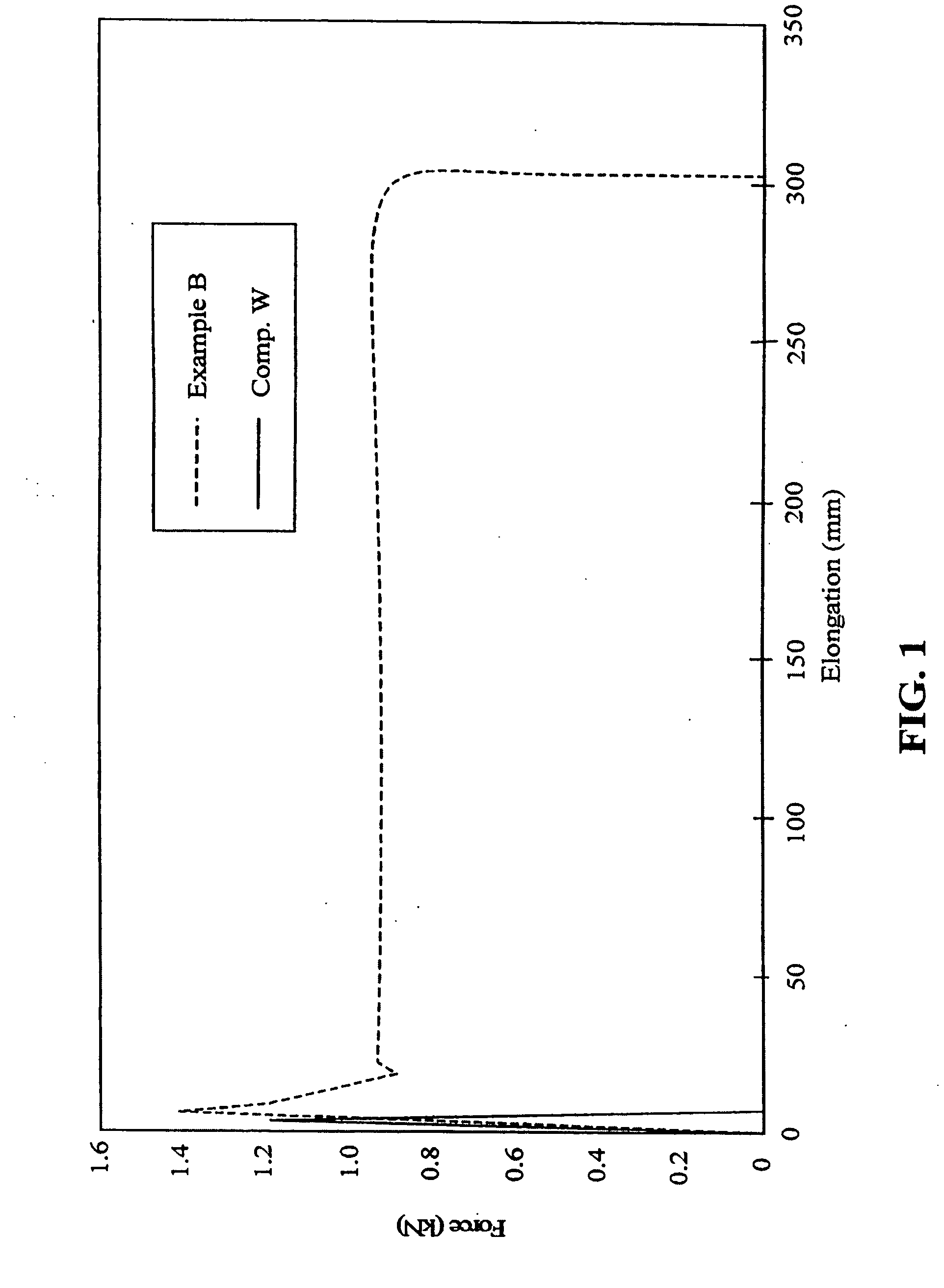Polymeric nanocomposites
a polymer and nano-composite technology, applied in the field of nano-composite compositions, can solve the problems of poor interaction between the onium group and the clay, the overall performance of the nano-composite is reduced, and the interaction is less controllable, so as to improve the rigidity, the effect of easy preparation and excellent properties
- Summary
- Abstract
- Description
- Claims
- Application Information
AI Technical Summary
Benefits of technology
Problems solved by technology
Method used
Image
Examples
example 1
[0097] Glycidyl methacrylate grafted polypropylenes were produced by reactive extrusion in a Leistritz™ 34 mm twin-screw extruder (L / D=40) using the corotating mode. A mixture of GMA and peroxide was directly fed into the molten PP at the first third of the extruder using a Shimadzu™ LC610 pump. The extrusion was performed at 180° C. at a screw rotation speed of 100 rpm and a throughput of 5 kg / h. Devolatilization was performed at 240° C. through a port situated in the last third of the extruder.
example 2
[0098] EPOXY modified maleic anhydride grafted polypropylenes were produced by reactive extrusion in a Leistritz™ 34 mm twin screw extruder (L / D=40) using the corotating mode and high shear screw configuration. MAgPP (Polybond™ 3150) or a mixture of PP and MAgPP which was dry blended first, was then fed into the extruder. EPOXY was fed into the molten mixture of PP and MAgPP. The extrusion was performed at 200° C. at a screw rotation speed of 200 rpm and a throughput of 5 kg / h. The weight ratio between Polybond™ 3150 and EPOXY was kept in the range of from 4-25.
example 3
[0099] Glycidyl methacrylate modified styrene grafted polypropylenes were produced by reactive extrusion in a Leistritz™ 34 mm twin-screw extruder (L / D=40) using the corotating mode. A mixture of GMA, STY and peroxide was directly fed into the molten PP at the first third of the extruder using a Shimadzu™ LC610 pump. The extrusion was performed at 180° C. at a screw rotation speed of 100 rpm and a throughput of 5 kg / h. Devolatilization was performed at 240° C. through a port situated in the last third of the extruder.
PUM
| Property | Measurement | Unit |
|---|---|---|
| interlayer distance | aaaaa | aaaaa |
| temperature | aaaaa | aaaaa |
| temperature | aaaaa | aaaaa |
Abstract
Description
Claims
Application Information
 Login to View More
Login to View More - R&D
- Intellectual Property
- Life Sciences
- Materials
- Tech Scout
- Unparalleled Data Quality
- Higher Quality Content
- 60% Fewer Hallucinations
Browse by: Latest US Patents, China's latest patents, Technical Efficacy Thesaurus, Application Domain, Technology Topic, Popular Technical Reports.
© 2025 PatSnap. All rights reserved.Legal|Privacy policy|Modern Slavery Act Transparency Statement|Sitemap|About US| Contact US: help@patsnap.com

